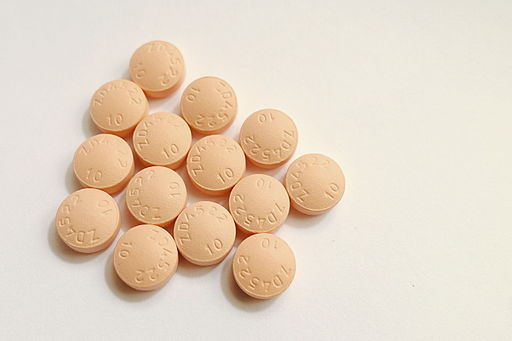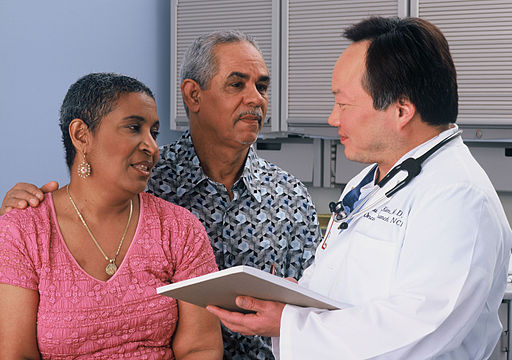
Dr Setor Kunutsor, Research Fellow in Evidence Synthesis/ Epidemiologist, School of Clinical Sciences, University of Bristol
Statins are well known and established for their role in the prevention of cardiovascular disease (heart attack, strokes, or angina) and this is based on their ability to lower levels of cholesterol in the blood.
However, there is evidence to suggest that statins have multiple effects and these include potential beneficial impacts on other disease conditions.
Venous thromboembolism is a condition involving the formation of blood clots in the veins of the lungs and lower limbs. It affects millions of people globally and is a preventable cause of hospital-related deaths.
Standard techniques for the prevention of venous thromboembolism include the use of elastic stockings, compression devices, patient mobility and rehabilitation, and anticoagulant therapy (blood thinning medications).

Deep Vein Thrombosis. Blausen.com staff (2014). “Medical gallery of Blausen Medical 2014“. WikiJournal of Medicine 1 (2). DOI:10.15347/wjm/2014.010. ISSN 2002-4436
Evidence now suggests that statins also have the ability to reduce inflammation in the body and prevent the formation of blood clots. Based on these properties, there have been suggestions that statins may prevent venous thromboembolism.
Several studies have investigated this, however the evidence has not been conclusive until now.
We decided it was time to bring all the evidence together and evaluate if statins really did have a protective effect on the risk of developing venous thromboembolism.
Altogether we analysed 36 studies (13 observational cohort designs and 23 randomised controlled trials) with data on more than 3.2 million participants.
Our results showed a clear link between the use of statins and a reduced risk of developing venous thromboembolism.
People who used statins had a 15-25 percent reduced risk of developing venous thromboembolism compared with those who did not use statins.
The results also suggested that this protective effect might be attributed to rosuvastatin, which is a newer type of statin and has been suggested to be more effective in lowering “bad cholesterol” and raising “good cholesterol.” Indeed, these findings provide clear evidence that statins have a beneficial effect in the prevention of venous thromboembolism.

Rosuvastatin (marketed by AstraZeneca as Crestor) 10 mg, by Mk2010 (Own work) CC BY-SA 4.0, via Wikimedia Commons
In another follow-up study by our group, pooled analysis of eight studies involving more than 103,500 participants revealed that statin use was associated with reduced risk of recurrent venous thromboembolism.
However, it is important to bear in mind that venous thromboembolism was not a primary endpoint in several of the trials that were pooled in the recent analysis. Furthermore, in the second study, pooled analysis only involved observational cohort studies as there were no randomised controlled trials available.
Further robust evidence is therefore needed to confirm these findings before guidelines for statin use are expanded to include prevention of venous thromboembolism.
Though statins should not be solely prescribed to reduce the risk of venous thromboembolism, guideline bodies, such as the National Institute for Health and Care Excellence (NICE), should review the overall evidence and consider including statins as an adjunct to established anticoagulants in venous thromboembolism prevention in some specific patient populations.
Although anticoagulants are very effective for preventing venous thromboembolism, they are commonly associated with increased risk of bleeding episodes. In addition, high rates of venous thromboembolism have still been reported in people who have received anticoagulant therapy.
Since most patients who experience venous thromboembolism generally tend to have prevalent medical conditions such as heart disease and dyslipidaemia (abnormal levels of lipids, such as high cholesterol), the use of statins may be beneficial in the prevention of venous thromboembolism and heart disease in combination.
Prescribing Statins
The amount of evidence showing the beneficial effects of taking statins in cardiovascular prevention is substantial. However, there is still a lot of debate as to whether statins should be prescribed to everybody at high cardiovascular risk.
Whether to prescribe a statin is commonly based on a person’s overall risk of experiencing a heart attack or stroke within a 10 year period. This is normally calculated by a health professional with the aid of a risk calculator.

Couple consults with health professional, Image credit: Rhoda Baer (Photographer) Public domain via Wikimedia Commons
To be prescribed a statin in the UK, NICE suggests that an individual should have a 1 in 10 chance or more of having a heart attack or stroke in the next 10 years (10% risk), this is much lower than the old threshold (20% risk).
This newer threshold means people at lower or moderate cardiovascular risk can all be prescribed statins.
A number of health professionals including leading doctors have criticised this new guidance based on the argument that the side effects outweigh the benefits for people with lower cardiovascular risk, and cost implications have also been reported.
However, NICE reports that the health benefits associated with this new threshold far outweigh the possible side effects and that statins are also cost effective.
Though side effects have been associated with the use of statins, a lot of these associations have been generated as a result of media hype. Published evidence suggests that only a small fraction of side effects reported by people are actually attributable to statins.
It is generally expected that every medication has side effects.
Statins have been in use for several decades and are safe and generally well tolerated. The most common and important adverse side effects of statins include muscle pain, an increased risk of diabetes, and increased blood levels of liver enzymes.
While most people taking statins won’t experience these side effects, the majority of these symptoms are reversible once the particular statin is stopped, changed, or its dose lowered.
Even though a small number of people on statins may develop an earlier onset of diabetes, this does not diminish the effectiveness of statins in reducing cardiovascular risk.
Indeed, the majority of people who develop early onset diabetes are those people who are already at high risk and most people with diabetes are prescribed statins because of their high risk of developing cardiovascular disease.
Before prescribing a statin to a patient, health professionals should always weigh the potential benefit against the potential adverse effects. In addition, informed patient preference should always be elicited.
The safety and efficacy of statins have been tested in several well-designed long-term clinical trials and their use in the prevention of cardiovascular disease have spanned several decades.
Their use in cardiovascular risk prevention is established and over seven million adults are taking statins in the UK alone.
In the coming years, millions more adults will be prescribed statins.
The emerging evidence suggests that the use of statins may extend beyond cholesterol lowering.
Though statins cannot replace anticoagulants for the prevention of venous thromboembolism, guideline bodies should consider the use of statins as an add-on to anticoagulants in patient populations such as those at high risk of a first or recurrent venous thromboembolism. Such patients may include those who have undergone major surgery such as lower limb total joint replacement.
Statins may also be used instead of anticoagulants in patients who are deemed unsuitable for anticoagulant therapy and in some patients who are at low VTE risk.
However, such decisions need to be taken on an individual patient basis after careful evaluation of the risk profile of such patients and weighing the risk-benefit ratio.
Further research evidence is still warranted.
Statins and venous thromboembolism: do they represent a viable therapeutic agent? – Research paper, published July 2017.
Note: This article gives the views of the author, and not the position of the PolicyBristol Blog, nor of the University of Bristol.
